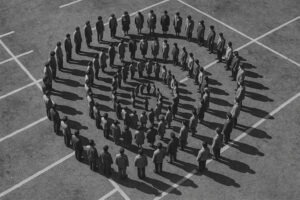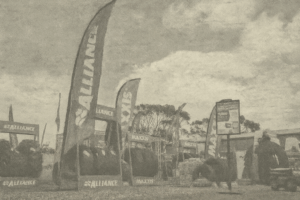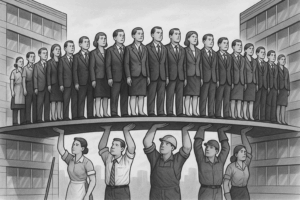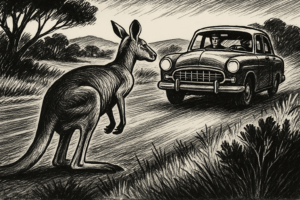A Foot in Two Worlds (and Galaxies)
I remember a Monday morning in a client’s boardroom, feeling like a character in a Star Wars saga. On one side of the table sat my agency’s creative lead, excitedly pitching an ambitious (and expensive) campaign. On the other side, the client’s marketing manager nervously clutched her quarterly targets. As the Account Director (AD), I was squarely in the middle – a guardian of balance. In that moment, I felt like what I can only describe as a Jedi. Tasked with maintaining harmony in the Force, resisting the pull of the “dark side” (short-term profit or blind client appeasement) while upholding the “light” (long-term trust and mutual success). Such is the daily narrative of a great Account Director: a professional with one foot in the agency world and one in the client’s universe, striving to serve both masters without tipping into imbalance.
On paper, an Account Director is the liaison between the agency and the client, responsible for guiding campaigns from ideation to execution. A great AD is often an unsung hero, the person keeping the lights on by nurturing the client-agency relationship. But beyond the job description lies a more nuanced, dual role. You are the client’s representative inside the agency’s halls, and the agency’s ambassador in the client’s world. Walking this tightrope is both an art and a science – one that demands empathy, savvy, and sometimes, heroic levels of patience. Below, I’ll reflect on what I feel makes a great Account Director in a digital agency, drawing from real experiences and even a bit of anthropological wisdom, to explore how we navigate the light and dark forces at play.
The Dual Role, Client Champion & Agency Advocate
Every Account Director lives a professional double life (more like triple). To the client, you are the face of the agency – the one who speaks their language, understands their business, and advocates for their needs. To your agency, you are the voice of the client, bringing their perspective into internal discussions, fighting for their interests, but also steering them toward the agency’s vision. Striking the right balance is crucial. If you lean too far toward the client’s side, you risk being seen internally as “client-pleasing” at the expense of the agency’s profit or creative integrity. Lean too far toward the agency’s agenda, and you may undermine the client’s trust or best outcomes.
In practice, being a client’s representative inside the agency means constantly empathising with the client’s goals and constraints. You champion their brief in front of your strategists and creatives. I’ve often found myself saying in meetings, “Let’s remember what the client’s CEO is expecting this quarter,” to ground a creative idea in business reality. Conversely, as the agency’s ambassador to the client, a great AD also educates and guides the client, sometimes delivering hard truths or pushing back diplomatically when the agency’s expertise says the client’s idea won’t work. You might gently say, “Based on our experience, here’s a different approach that could achieve your goal more effectively.” In these moments, you’re advocating for the agency’s know-how and creative vision.
Playing both roles is a delicate dance. One moment you’re reassuring your agency’s finance director that giving a bit of extra value to the client is worthwhile for long-term relationship building; the next, you’re explaining to the client why the agency’s new strategic recommendation (which might cost more upfront) is in their best interest. I’ve learned that the key is integrity and consistency – if both sides know that you ultimately seek a win-win outcome, they’re more likely to trust your guidance. In other words, a great AD must become a symbol of partnership. You are there to ensure the client and the agency both benefit and feel heard. When done right, this dual advocacy fosters a partnership where great work can thrive. As one industry veteran put it, a good account director is always scanning “what’s now and what’s next” to improve both the client’s work and the agency’s success. That forward-looking mindset – serving the mutual goals of client and agency – is at the heart of the role.
Walking the Empathy Tightrope
Empathy is the Account Director’s superpower – but it must be wielded carefully. Too little empathy, and you’ll come off as tone-deaf to your client’s pressures or your team’s burnout. Too much empathy, however, and you risk losing objectivity or becoming overly aligned with one side. Great ADs develop a kind of professional empathy, a deep understanding of both client and agency perspectives without becoming completely partisan to either. THIS IS NOT AN EASY THING TO ACHIEVE.
I recall a situation early in my career where I grew very close to a client’s marketing team. We’d grab coffees, share jokes about each other’s kids – in short, the relationship became very friendly. It felt great… until budget negotiations rolled around. When I tried to uphold the agency’s pricing on a new project, the client’s team reacted with surprise and a hint of betrayal – weren’t we friends? In hindsight, I had blurred the lines. I’d been too empathetic and matey, so the client assumed I’d always bend in their favour. It’s a classic pitfall: as one agency GM noted, if things get too familiar, the client can start to feel “a little cheated when they have to pay you”. In other words, overstepping professional boundaries in the name of friendship can undermine the very relationship you meant to strengthen. Ever since, I’ve kept in mind that healthy boundaries are a form of empathy too – they protect both sides. Our clients deserve transparency and fairness, but also a professional firmness that ultimately safeguards the partnership.
On the flip side, I’ve seen Account Directors err by empathising only with their own agency’s position. Picture this: an AD who automatically defends every agency decision – timeline slips, cost overruns, creative tangents – without considering the client’s frustrations. That AD might think they’re a loyal agency team member, but from the client’s view, they appear indifferent or deaf to legitimate concerns. The result? Frayed trust and a client who feels unheard. Balanced empathy means listening intently to the client’s needs and concerns (even if it’s the umpteenth time you’ve heard that ROI is tight or that legal approvals are a nightmare), while also understanding the agency team’s creative pride and operational challenges. Then, you translate – empathetically. You explain to your creative team why the client is anxious about that edgy campaign idea (their boss in the C-suite is extremely risk-averse), and you find a compromise. You explain to the client why the team is pushing a bold strategy – not just because the agency wants an award, but because they truly believe it will outperform the safer approach. In these moments, you are effectively an empathy bridge, maintaining trust by showing each side you understand them, yet guiding both toward a middle path.
Great Account Directors humanise both parties to each other. We remind the client that an overworked design team isn’t just a “vendor” but people who take pride in their craft. We remind the agency that the client isn’t an abstract “account” but a person under real pressure from their own bosses. By walking this empathy tightrope carefully, an AD ensures neither side falls off into the abyss of cynicism or frustration. Instead, both agency and client feel seen, respected, and motivated to collaborate – the only sustainable way to achieve those stellar campaign results everyone wants.
Agency Politics and the Dark Side of Profit
Let’s address the Darth Vader in the room: agency politics and the pressure to make a profit. Digital agencies are businesses, and like any business, there are revenue targets, margins, and growth goals looming in the background of every client engagement. As an AD, you’re often caught at the nexus of lofty ideals and financial reality. The tension can feel like the pull of the dark side – a whisper to prioritise short-term revenue over the client’s long-term welfare. In tough times, that whisper can grow loud. (One agency CEO recently summed up the mood bluntly: “The business of agencies right now is staying in business.” – a testament to how survival instincts can dominate agency decisions in a competitive market.)
I’ve lived through moments when agency greed undermined outcomes. In one instance, our agency leadership pushed hard to upsell a client on a costly e-commerce platform overhaul. Yes, it would bump up our quarterly numbers – but it wasn’t truly what the client needed at that time. My client contact was hesitant, saying it felt like using a cannon to kill a fly. I privately agreed, but the internal pressure was intense; I was a relatively new AD and didn’t feel I could contradict the powers that be. We convinced the client to proceed. The result? A six-month project that drained the client’s budget and patience, and delivered underwhelming results because it solved the wrong problem. The client’s trust was shattered. They never openly scolded us, but the next contract renewal was not a given. I learned the hard way that chasing revenue at the expense of the client’s true interests is a Pyrrhic victory (on at too great a cost to have been worthwhile for the victor) – the dark side might win the battle, but you lose the war (and the client). In the long term, an unhappy client will walk away, and no one will profit.
Agency politics can also pressure ADs to defend the indefensible. Perhaps the agency over-promised to win the pitch, and now the team is burning out to deliver. Perhaps creative leadership insists on a risky concept that will look great in our portfolio, even if the client might get nervous. In internal discussions, an AD might hear rationales that are less than noble: “If we don’t upsell this, another agency will,” or “The client will never know we padded these hours.” These are pivotal moments for an Account Director. Do you yield to the dark side of spinning or obscuring the truth? Or do you stand up for the light – transparency, honesty, and advising what’s genuinely best for the client? A great AD finds ways to advocate for the client’s outcome even within their own agency. Sometimes that means having tough conversations with your bosses, backing up your stance with logic: “If we push for this quick profit and it fails, we’ll burn the relationship. What if instead we propose a smaller pilot initiative that addresses the client’s immediate need and builds trust for bigger projects?” In my experience, reframing what’s good for the client as a long-term win for the agency can turn the tide internally. After all, a happy client tends to lead to more business. Research backs this up – trust and relationship quality directly impact an agency’s ability to generate new business (three-quarters of marketers find agencies via word-of-mouth). In short, client success is agency success, a truth any Jedi—I mean AD—should hold dear.
Yet, I’d be lying if I said it’s always easy. The politics within an agency – competing department priorities, utilisation rates, ego battles over creative direction – can test an AD’s resolve. The trick is to remember your purpose: to champion great work that delivers for the client and the agency. When you keep that mission as your North Star, it’s easier to resist the magnetic pull of pure profit motives. Instead, you push for sustainable growth built on client results. I often think of it this way: every time I choose to prioritise a client’s outcome over a quick buck, I’m investing in the “light side” – trust, partnership, and a reputation for integrity. It’s that reputation that will keep your agency’s galaxy thriving in the long run, not one-off cash grabs.
Navigating the Client’s Internal Galaxy
If internal agency politics weren’t challenging enough, an Account Director must also navigate the political Death Star, which is the client’s organisation. Clients are not monolithic; they are made up of individuals and departments with their own agendas and power dynamics. A great AD learns to map out the client’s internal landscape – who holds the real influence, what unspoken tensions exist between, say, the CMO and the CFO, or how the brand team and the sales team might have clashing priorities. Understanding these dynamics is critical to delivering work that actually lands and lasts.
Consider a scenario: Your day-to-day client contact, a marketing manager, is excited about an innovative campaign your team proposed. You’re ready to launch, when suddenly the client’s CFO voices concerns that derail the plan – budget too high, ROI unclear. The project stalls. The marketing manager is frustrated and embarrassed internally, and your agency team is demoralised. A savvy Account Director would have anticipated this by probing early on about who the key decision-makers were and what internal hurdles might exist. In one of my past projects, I learned to ask, “Whose buy-in do we need to make this a success? Is your Head of Sales on board with this messaging?” Those questions uncovered that the sales department had historically felt left out of marketing initiatives – a clue that we needed to involve them or risk a last-minute veto. We adjusted our approach, invited a sales rep to a strategy session, and tweaked the campaign to address a sales concern. Lo and behold, when we eventually pitched to the C-suite, the Sales Director (usually a sceptic) was an unexpected ally, not an adversary.
Power dynamics within client organisations can directly shape an AD’s strategy. Sometimes, you’re effectively coaching your client-side contact on how to sell an idea to their boss. I’ve even helped draft internal pitch decks for a client to take to their CEO – arming them with data and arguments, almost like a rebel giving the hero the tools to take down the shield generator. Other times, the AD must reconcile differing client voices: the CEO who cares only about quarterly results, and the brand manager who cares about long-term brand equity. In such cases, the AD becomes a diplomat, finding language that resonates with both – framing a campaign as both a brand-builder and a sales driver, for instance.
From an anthropological lens, stepping into a client’s company is like entering a foreign culture. Each organisation has its own jargon, values, and hierarchy. Here, I channel a bit of anthropology: adopting an emic perspective – understanding the client’s world as an insider – while also keeping an etic perspective – observing objectively as an outsider. Practically, this means I strive to speak the client’s language (literally and metaphorically) and respect their culture, without losing my external objectivity. For example, one client might be very data-driven and formal, so my communications mirror that tone with detailed spreadsheets and conservative language. Another client might pride themselves on being edgy and trendsetting, so I’d communicate in a more fast-and-loose creative style. Adopting the emic (insider) view builds rapport – it shows I “get” them. In fact, as one agency strategist noted, even something as small as using your client’s internal lingo can signal that you truly understand and are invested in their business. It’s amazing how a client’s eyes light up when you use the nickname of their proprietary process or reference an internal motto – they see you as one of their own. That trust is priceless.
Yet I pair this with an etic (outsider) mindset – remembering that I’m not actually a member of the client’s company, which helps me stay objective. This outsider vantage lets me ask the naïve questions an insider might overlook and offer fresh perspectives. It’s a balancing act of insider empathy and outsider wisdom. Great ADs toggle between these modes: deeply embed yourself to grasp the client’s internal realities (their “culture”), then step out of that skin to help them see beyond their bubble. When you can articulate the client’s challenges better than they can – and bring an external solution they hadn’t considered – you’ve demonstrated the value that keeps agencies in the room even when clients consider going in-house. In a sense, you become both a trusted tribe member and the wise outsider sage. It’s a powerful dual identity that elevates an AD from mere order-taker to a strategic partner.
Trust, Reciprocity and the Gift of Partnership
At the heart of every strong client-agency engagement lies a simple, fragile thing: trust. Trust is the Force that binds our two worlds together. It’s hard-won and easily lost, and a great Account Director knows that nurturing trust is their foremost job. Without trust, even the most brilliant campaign will falter under suspicion and second-guessing. With trust, even challenges and mistakes can be weathered together. But how does an AD build and sustain trust? Partly through all the ways discussed – honesty, balanced empathy, consistent delivery – but there’s an even deeper concept at play: the idea of the client relationship as a gift exchange with mutual obligations, a notion straight out of anthropology.
Anthropologists like Marcel Mauss famously observed that in many cultures, a gift is never “free” – accepting a gift initiates a cycle of exchange, an ongoing relationship of give and take. Each party incurs obligations to reciprocate in some way, and failing to do so can damage the bond. I’ve come to see a client’s business as a kind of gift the client bestows upon the agency. It’s not a gift in the trivial sense (after all, we earn that business and get paid for work), but in a broader sense, it’s an offering that creates mutual obligations. The client entrusts us with their brand and budget – a gesture of faith. In return, the agency (through the AD’s stewardship) owes the client our dedication, creativity, and honest counsel. If we, as an agency, fail to reciprocate that trust, say, by taking the money and delivering shoddy work or self-serving recommendations, we betray the unspoken social contract. In many cultures, when gifts are not acknowledged or reciprocated, the giver feels insulted and views the offender as untrustworthy. Business relationships are not so different: a client who feels their trust or generosity isn’t reciprocated with results and respect will understandably view the agency as unfriendly and unfaithful.
Conversely, when a client treats an agency not as a disposable vendor but as a partner – that too is a kind of gift. I’ve had clients who, for example, approved additional budget for user research because they trusted it would improve outcomes, even when they didn’t have to. Or clients who defended our agency in front of their board when results took time to manifest. These gestures create a sense of indebtedness and gratitude on the agency side. A great Account Director makes sure to acknowledge these gifts and ensure the agency reciprocates in kind – perhaps by going the extra mile on a deliverable, or proactively solving a problem outside the immediate project scope. This isn’t about quid pro quo in a cold, calculated way; it’s about stewardship and reciprocity. You nurture the client’s business as if it were a precious trust handed to you – because it is. In healthy long-term relationships, both client and agency continuously exchange value and favours (ideas, accommodations, small concessions, extra efforts) that strengthen social ties, much like the gift cycles anthropologists describe.
One story comes to mind that solidified this for me. Our agency once made a mistake – a pretty big one – in a campaign rollout that caused the client public embarrassment. We were mortified. As the AD, I braced for the worst. But the client’s marketing director didn’t rage or threaten to fire us. Instead, he invited us to a candid post-mortem meeting. He said, “We chose you as a partner, so let’s fix this together.” That grace felt like a gift of trust we hadn’t earned. It created an obligation: we owed them not just a fix, but redoubled commitment to ensure it never happened again. We poured our hearts into making things right, working overtime, devising new quality checks. In the end, the campaign recovered, and our relationship was stronger than before, because we’d gone through fire together in good faith. This experience taught me that trust grows when both sides invest in each other, treating the relationship itself as something worth protecting – a shared “third entity,” almost like a child both client and agency are raising. Each project, each favour, each hard conversation is an exchange that, handled honourably, adds to a reservoir of goodwill.
Yet, trust is undeniably fragile. Industry surveys remind us that even today, many client-agency relationships are strained or short-lived – over half of brands said in 2023 that they were likely to end their main agency partnership within six months. That’s a sobering statistic, and it underscores that trust can evaporate quickly if not continuously nourished. A change in client personnel, one disastrous project, or a perception of complacency can break the spell. As ADs, we must constantly tend to the relationship like a gardener to a garden, weeding out doubt and resentment and planting seeds of value and reliability. Regular check-ins, honest conversations about what is and isn’t working, and showing up consistently – these are our tools. Often I ask clients, “How are you feeling about our partnership? What can we do better?” Those are nerve-wracking questions, but they invite dialogue that can surface small issues before they become deal-breakers. It’s far better to address a brewing concern (maybe the client feels the agency’s strategy team hasn’t fully grasped their new market, for example) than to let silent disappointment fester. In the words of one study, effective communication and proactive transparency are critical – breakdowns in understanding desired outcomes are often what cause relationships to break. A great AD doesn’t fear these discussions; we facilitate them, using them to reinforce that mutual obligation: we are in this together, and we will both hold up our end of the bargain.
Steward of Balance: The Way of the Account Director
Being a truly great Account Director is not for the faint of heart. It requires the wisdom of Yoda, the diplomacy of Princess Leia, and occasionally the nerve of Han Solo when flying into an asteroid field of conflicting demands. It’s about being a steward of balance – between client and agency, between empathy and objectivity, between creative ambition and practical results, between short-term wins and long-term relationship health. In the grand narrative of agency life, the AD is often the unsung protagonist, orchestrating harmony where there is potential for discord. You will be very unlikely to discover someone in their 20s let alone 30s with enough life and work experience to achieve this mastery. I’m sure that comment will put a few ambitious impatient younglings offside.
To thrive in this role, you cultivate what anthropologists might call a bi-cultural fluency – you speak the culture of the client and the culture of the agency. You learn to sense when the relationship is veering off-course and apply the right remedy: maybe a frank talk with the client to reset expectations (stepping up as the agency’s advocate), or an internal come-to-Jesus meeting to remind the team of the client’s perspective (stepping into the client’s shoes). You also become a protector of trust, treating it almost as a sacred Force that you must keep in balance. When faced with the inevitable temptations of the dark side – cutting a corner, milking a budget, placating a client against your better judgement – you remember that every action either feeds or starves the trust in the relationship. Great ADs consistently feed trust, even if it means tough love or foregoing a short-term benefit. The reward is a partnership that endures and delivers value year after year, which ultimately benefits everyone.
In closing, the role of Account Director in a digital agency is a tale of duality and harmony. It’s the account person who can channel empathy into insight, who can mediate between a client’s needs and an agency’s goals like a balanced Jedi, and who views the client relationship not as a transaction but as a long-term exchange of gifts and obligations. Such an AD becomes not just a manager, but a steward – of the client’s trust, of the agency’s integrity, and of the collaborative spirit that drives successful campaigns. Seasoned agency professionals know that this path is challenging, even exhausting at times, but it’s also deeply rewarding. When you see a client and your agency team celebrating a win together – both feeling heard, respected, and proud – you realise you’ve been part of something special: the forging of genuine partnership. And that is the light side triumph every great Account Director lives for.
Sources: The reflections above draw on a blend of first-hand experience and industry insights. For further reading on building trust in client-agency relationships and balancing these dynamics, see Basis Technologies’ report on the strain in modern partnerships, Valerie Donati’s perspective on client-agency tension points, and anthropological discussions of gift reciprocity which parallel business exchanges. These sources underscore the importance of empathy, transparency and reciprocity – the very forces that keep the client-agency galaxy in balance.




